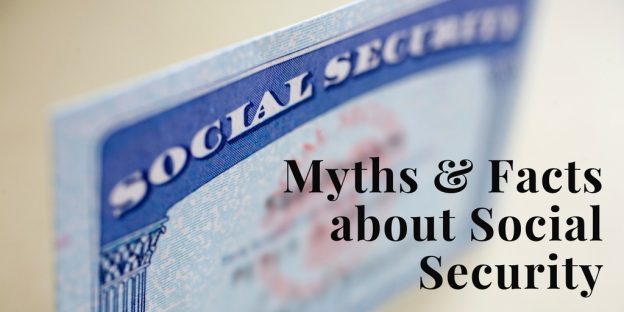
Myth: Social Security will provide most of the income you need in retirement.
Fact: It’s likely that Social Security will provide a smaller portion of retirement income than you expect.
There’s no doubt about it–Social Security is an important source of retirement income for most Americans. According to the Social Security Administration, more than nine out of ten individuals age 65 and older receive Social Security benefits.
But it may be unwise to rely too heavily on Social Security, because to keep the system solvent, some changes will have to be made to it. The younger and wealthier you are, the more likely these changes will affect you.
But whether retirement is years away or just around the corner, keep in mind that Social Security was never meant to be the sole source of income for retirees. As President Dwight D.
Eisenhower said, “The system is not intended as a substitute for private savings, pension plans, and insurance protection. It is, rather, intended as the foundation upon which these other forms of protection can be soundly built.”
No matter what the future holds for Social Security, focus on saving as much for retirement as possible. You can do so by contributing to tax-deferred vehicles such as IRAs, 401(k)s, and other employer-sponsored plans, and by investing in stocks, bonds, and mutual funds.
When combined with your future Social Security benefits, your retirement savings and pension benefits can help ensure that you’ll have enough income to see you through retirement.
Myth: Social Security is only a retirement program.
Fact: Social Security also offers disability and survivor’s benefits.
With all the focus on retirement benefits, it’s easy to overlook the fact that Social Security also offers protection against long-term disability. And when you receive retirement or disability benefits, your family members may be eligible to receive benefits, too.
Another valuable source of support for your family is Social Security survivor’s insurance. If you were to die, certain members of your family, including your
spouse, children, and dependent parents, may be eligible for monthly survivor’s benefits that can help replace lost income.
For specific information about the benefits you and your family members may receive, visit the SSA’s website at www.socialsecurity.gov, or call 800-772-1213 if you have questions.
Major Sources of Retirement Income

Source: Fast Facts & Figures About Social Security, 2016, Social Security Administration
Myth: If you earn money after you retire, you’ll lose your Social Security benefit.
Fact: Money you earn after you retire will only affect your Social Security benefit if you’re under full retirement age.
Once you reach full retirement age, you can earn as much as you want without affecting your Social Security retirement benefit. But if you’re under full retirement age, any income that you earn may affect the amount of benefit you receive:
- If you’re under full retirement age, $1 in benefits Page 1 of 2, see disclaimer on final page will be withheld for every $2 you earn above a certain annual limit. For 2017, that limit is $16,920.
- In the year you reach full retirement age, $1 in benefits will be withheld for every $3 you earn above a certain annual limit until the month you reach full retirement age. If you reach full retirement age in 2017, that limit is $44,880.
Even if your monthly benefit is reduced in the short term due to your earnings, you’ll receive a higher monthly benefit later. That’s because the SSA recalculates your benefit when you reach full retirement age, and omits the months in which your benefit was reduced.
Myth: Social Security benefits are not taxable.
Fact: You may have to pay taxes on your Social Security benefits if you have other income.
If the only income you had during the year was Social Security income, then your benefit generally isn’t taxable. But if you earned income during the year (either from a job or from self-employment) or had substantial investment income, then you might have to pay federal income tax on a portion of your benefit.
Up to 85% of your benefit may be taxable, depending on your tax filing status (e.g., single, married filing jointly) and the total amount of income you have.
For more information on this subject, see IRS Publication 915, Social Security and Equivalent Railroad Retirement Benefits.
What Is Your Full Retirement Age?
| If you were born in: | Your full retirement age is: |
|---|---|
| 1943-1954 | 66 |
| 1955 | 66 and 2 months |
| 1956 | 66 and 4 months |
| 1957 | 66 and 6 months |
| 1958 | 66 and 8 months |
| 1959 | 66 and 10 months |
| 1960 and later | 67 |
Note: If you were born on January 1 of any year, refer to the previous year to determine your full retirement age.
Important Disclosure












 Your marriage lasted 10 years or longer
Your marriage lasted 10 years or longer

